Article: The Blues: A New Festive Mini-Collection by German Kabirski
The Blues: A New Festive Mini-Collection by German Kabirski
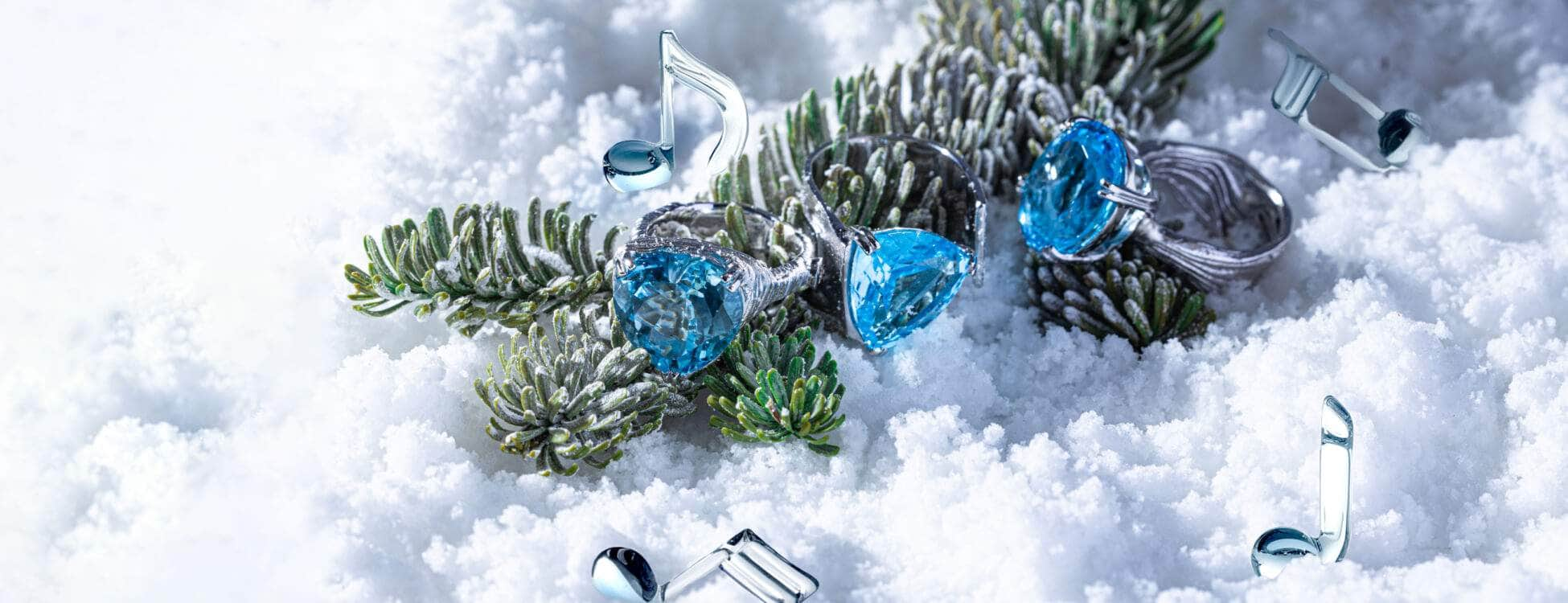
Gem session for your fingers and soul
Just in time to close out 2024 with a bold note, German Kabirski unveils The Blues, a stunning new mini-collection of blue topaz rings. This festive release brings the rhythm of resilience, the weight of the unspoken, and the freedom of improvisation into jewelry form.
Blue Topaz Rings: What’s So Special?
Blue topaz is one of those gemstones that gets everything right. Its color is the first thing you notice—clear, vibrant, and unmistakably blue, whether it’s the light, airy tones of sky blue or the rich, deep hues of London blue. This isn’t a stone that hides in the background.
Gemology Basics:
German Kabirski's success at the JCK Jewelers' Choice Awards is a testament to his innovative approach to jewelry design. Let's take a closer look at the winning pieces:
Shades of Blue:
Blue topaz comes in a range of shades, from pale sky blue to rich London blue. This collection offers a mix, so you can find the tone that suits your style—whether you’re going for soft and subtle or bold and dramatic.
Symbolism:
Blue topaz is linked to clear thinking and communication, which makes it more than just a pretty addition to your outfit. It’s a stone that carries meaning.

Blue Topaz: Key Gemological Properties
Blue topaz is a gemstone with some really interesting qualities. Let’s break it down.
Luster:
Blue topaz has a shiny, glassy surface—what gemologists call a vitreous luster. This gives it that crisp, clean shine when it’s polished and cut.
Refractive Index:
This measures how light bends as it enters the stone, creating sparkle. Blue topaz has a refractive index of 1.61 to 1.62, which means it reflects light beautifully without being overly flashy.
Dispersion:
This property refers to how much a gem splits light into rainbow colors. Blue topaz doesn’t have a lot of dispersion (or “fire”), but its rich color and clarity make it stand out in a different way.
Specific Gravity:
Blue topaz has a specific gravity of 3.49 to 3.57, meaning it feels solid and has a nice weight when set in jewelry. It’s substantial without being heavy.
Hardness:
With a hardness of 8 on the Mohs scale, blue topaz is tough and scratch-resistant, making it a practical choice for everyday jewelry like rings and bracelets.
Cleavage:
Blue topaz has perfect cleavage, which means it can split cleanly along specific lines. While this makes cutting and setting the stone tricky, skilled craftsmanship brings out its best.
Fracture:
If it does break, it tends to have a smooth, curved surface—what’s called a conchoidal fracture. This is part of why it takes such a great polish.
Pleochroism:
When you look at blue topaz from different angles, you might notice a slight change in color. This effect, called pleochroism, is subtle but adds depth to the stone.
Double Refraction:
Light passing through blue topaz splits into two rays, giving it extra brilliance and a sense of depth. This is what makes it look so lively when the light hits it.
Luminescence:
Unlike some gemstones, blue topaz doesn’t glow much under UV light. Its beauty is all about its natural color and clarity.
Absorption Spectrum:
Gemologists can identify blue topaz by the way it absorbs light, with specific patterns that confirm it’s genuine.
Blue topaz is a designer’s dream. Its bold color and natural sparkle make it the perfect centerpiece for jewelry that stands out without trying too hard. Whether it’s a single ring or part of a layered look, blue topaz lets you play with design in a way that feels fresh and modern. It’s tough enough for everyday wear, but there’s nothing everyday about how it looks. Blue topaz is all about bringing color, creativity, and personality into the art of jewelry.

The Art and Science of the Gemstone Cut
The highlight of this collection is the variety of cuts that showcase blue topaz in all its glory. Each shape—heart, round, oval, cushion, and pear—brings out different facets of the stone’s personality, offering something for every style. Blue topaz is a cutter’s favorite thanks to its clarity, durability, and the way it takes on a high polish. Its perfect cleavage, while requiring precision, allows for clean, sharp edges that enhance the brilliance of every cut.
Heart Cut
The heart cut is one of the most challenging and intricate shapes to achieve. It requires exceptional precision to align the two lobes symmetrically while maintaining sharp facet junctions along the cleft and tip. A well-cut heart-shaped blue topaz will have evenly distributed light reflection across the lobes and down to the culet, ensuring brilliance. Cutters must carefully angle the pavilion (the bottom portion of the stone) to maximize depth without making the stone appear bulky.

Round Cut
The round cut, with its brilliant faceting pattern, is designed to maximize light return. Typically featuring 57 or 58 facets, this cut achieves a balance between brilliance (brightness of the reflected light) and fire (dispersion of rainbow colors). The crown (top) facets are angled to create maximum brilliance, while the pavilion facets reflect light back through the table (the flat surface on top). For blue topaz, the round cut allows its vibrant color to take center stage while maintaining excellent symmetry.
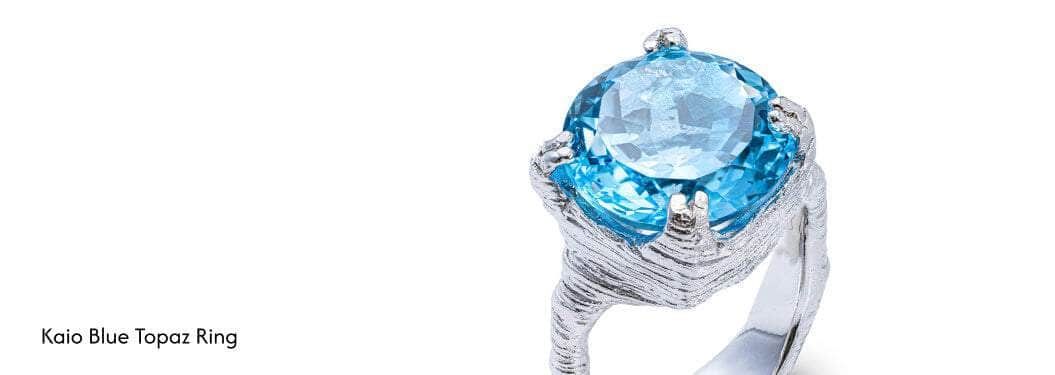
Oval Cut
The oval cut combines brilliance with a larger face-up appearance compared to a round cut of the same carat weight. Its elongated shape features a modified brilliant facet arrangement, often with 56 or more facets. The cutter focuses on maintaining proportion and symmetry to avoid a “bowtie” effect—dark zones that appear across the center due to misaligned light reflection. Oval cuts also highlight blue topaz’s depth of color beautifully, especially in the pavilion facets.
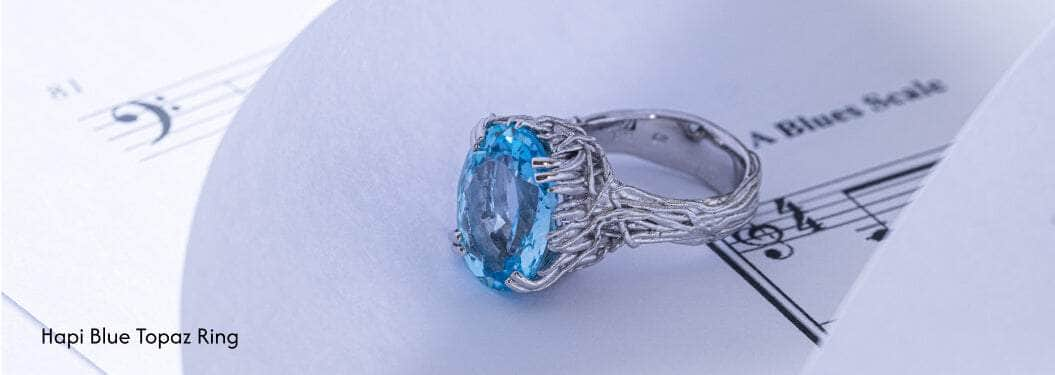
Cushion Cut
The cushion cut merges old-world charm with modern appeal. It has a square or rectangular shape with rounded corners, offering a softer look. The large facets on a cushion cut emphasize the stone’s clarity and color saturation, which is ideal for blue topaz. Cutters carefully balance the crown height and pavilion depth to ensure light is captured and reflected evenly. The cushion cut’s brilliance is often enhanced by a modified brilliant or step-facet pattern.
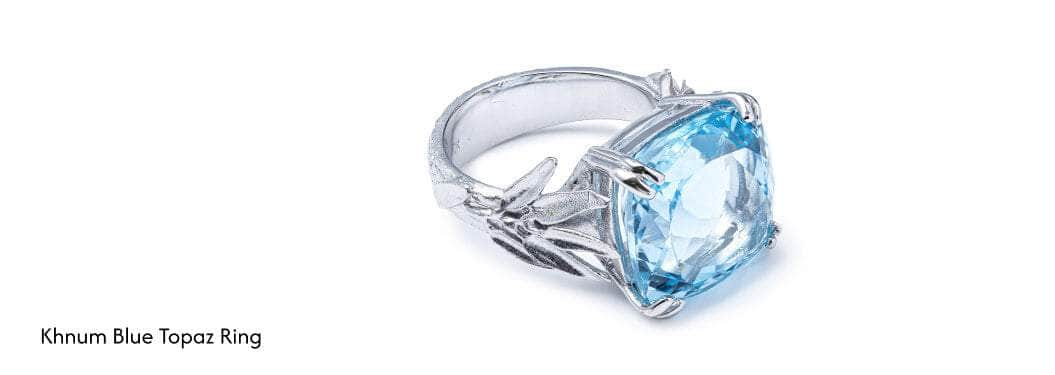
Pear Cut
The pear cut, also called the teardrop cut, combines the round and marquise shapes into one elegant silhouette. The pointed tip and rounded end require precise facet alignment to ensure even light distribution. The length-to-width ratio is critical to achieving an aesthetically pleasing shape—typically ranging from 1.5:1 to 1.7:1. For blue topaz, the pear cut allows the stone’s vibrant color to flow seamlessly from tip to base, while the faceting pattern enhances both brilliance and fire.
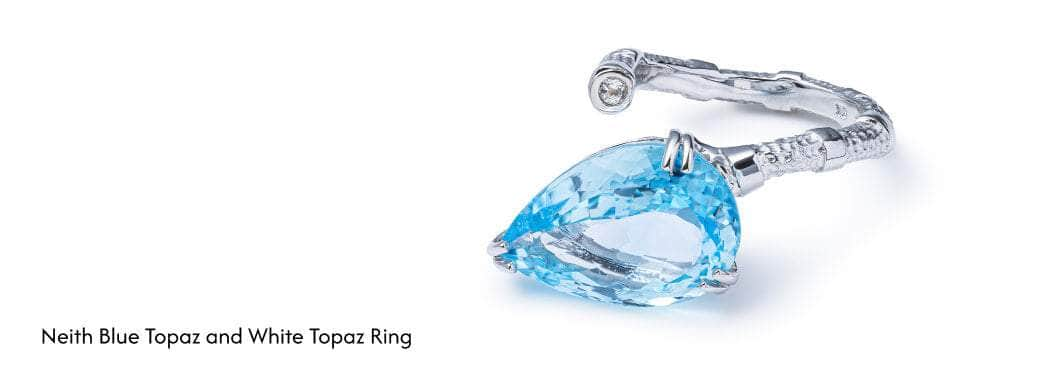
Considerations for Cutting Blue Topaz
Blue topaz’s specific gemological properties play a big role in how cutters approach their craft. Its perfect cleavage means it can split cleanly along certain planes if not handled properly, requiring careful planning during the cutting process. The stone’s high refractive index (1.61–1.62) enhances brilliance, but cutters must balance the pavilion depth and crown height to optimize light performance. A well-angled culet ensures no light leaks, while polishing amplifies the stone’s natural vitreous luster.
Each cut in this collection has been designed to make the most of blue topaz’s properties. Whether it’s the sharp symmetry of a heart cut or the elegant proportions of a pear cut, the craftsmanship involved elevates the stone from raw material to a work of art.
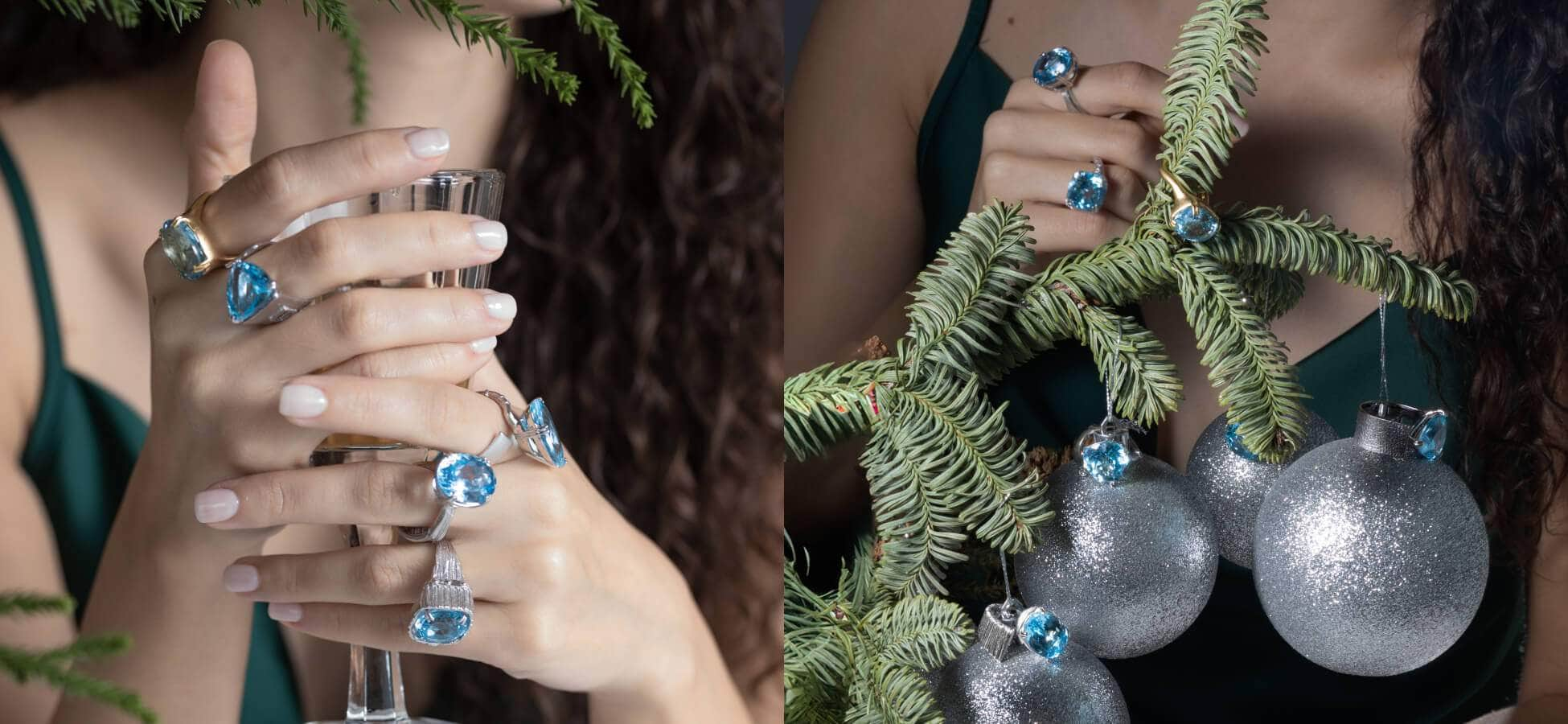
The Blues: Jewelry Collection Inspired by Music and Improvisation
We called this collection The Blues because it’s not about jewelry—it’s about the freedom to create, to feel, and to express. The Blues as a music genre is raw, soulful, and deeply personal. It’s about taking what’s around you, improvising, and creating something completely your own. That’s exactly how we approach design at German Kabirski.
Blues musicians don’t follow strict rules—they experiment, riff, and let the emotion take over. Our jewelry is born from the same spirit. We don’t design by the book; we let the shapes, colors, and textures of the materials guide us. Like the unpredictable twists of a Blues solo, each piece in this collection is unique, bold, and a little rebellious.
The Blues is also about connecting with people. The music resonates because it’s honest, and that’s what we strive for in our designs—pieces that aren’t just beautiful, but that feel real and personal. Blue topaz, with its striking colors and vibrant energy, became the perfect centerpiece for this collection. It’s strong, expressive, and impossible to ignore—just like the Blues.
The Blues collection is available online and at select retail locations. This is the final drop of 2024, a must-have for the season. Don’t just end the year—make a statement. Wear The Blues.
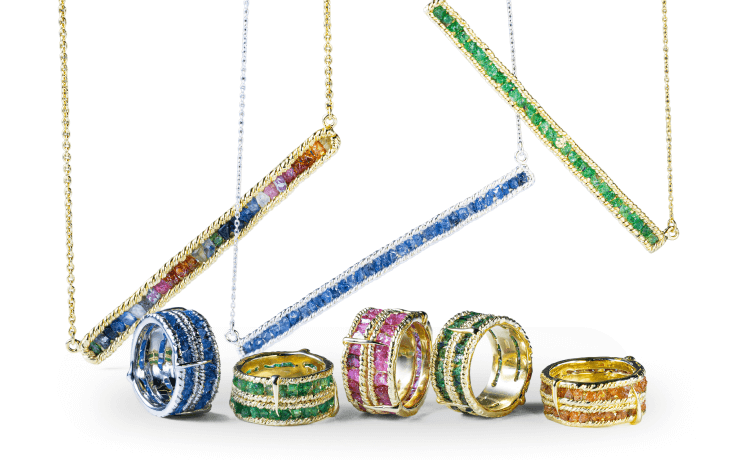

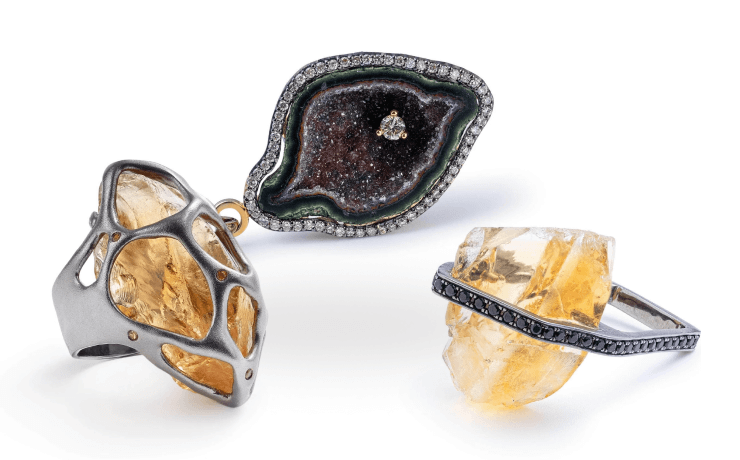

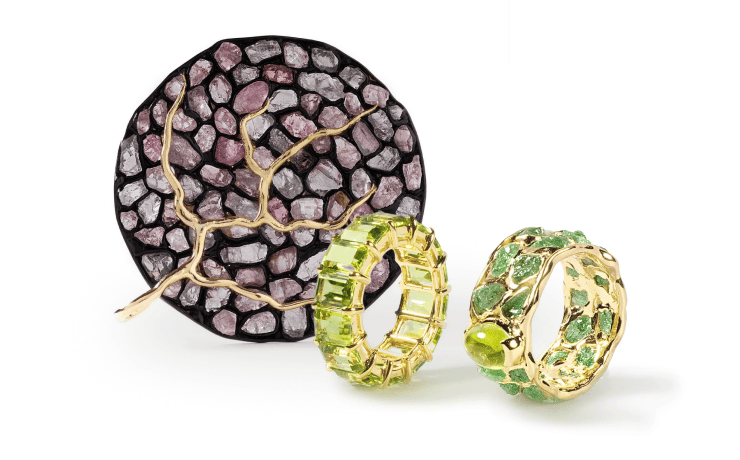
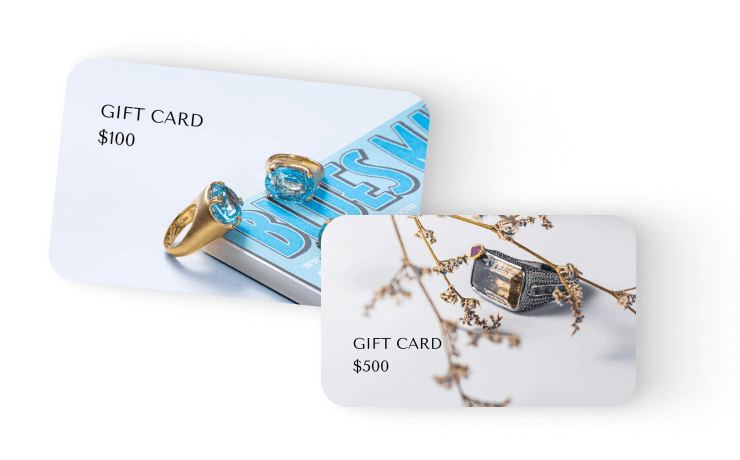
Share your comment